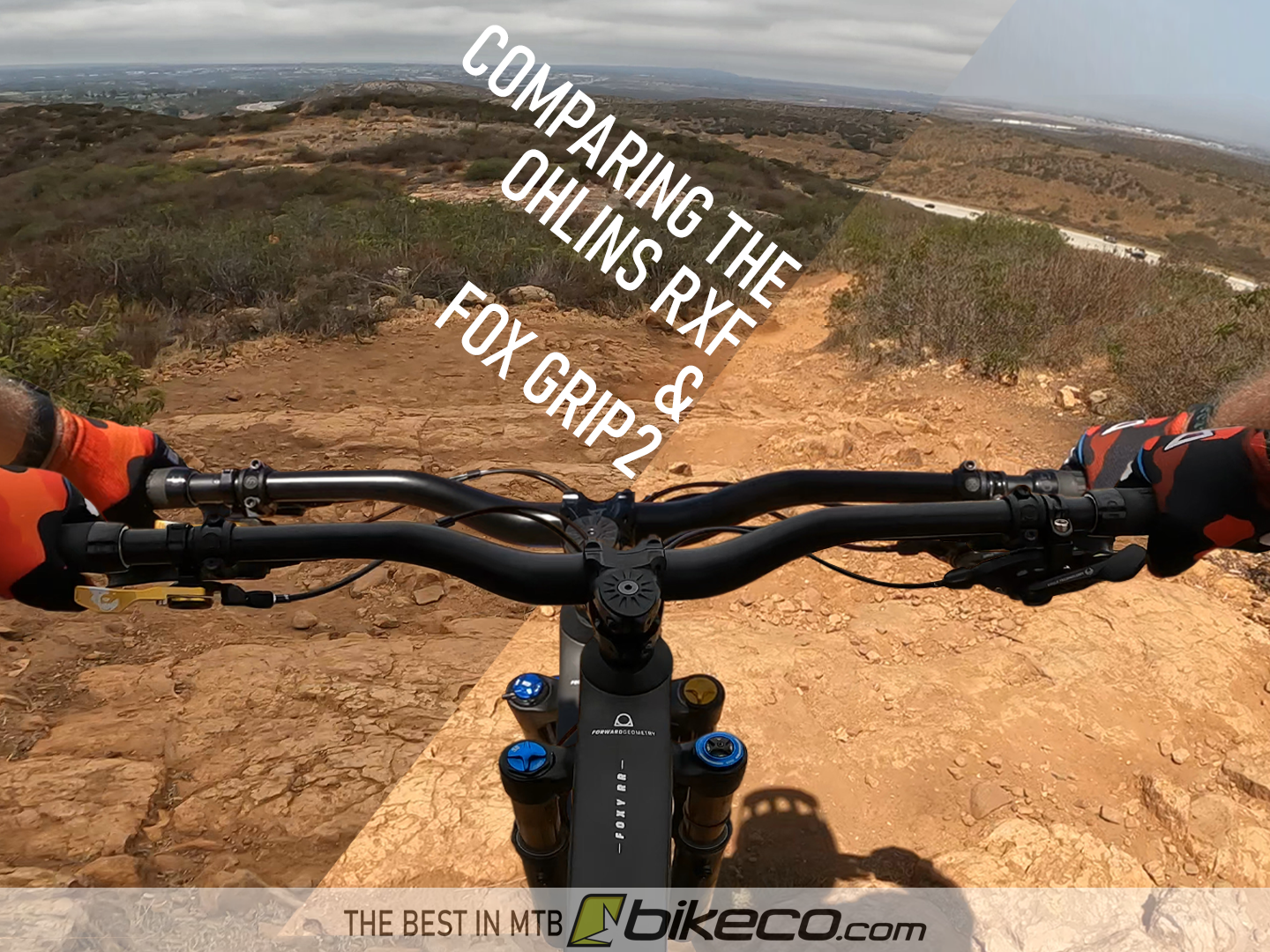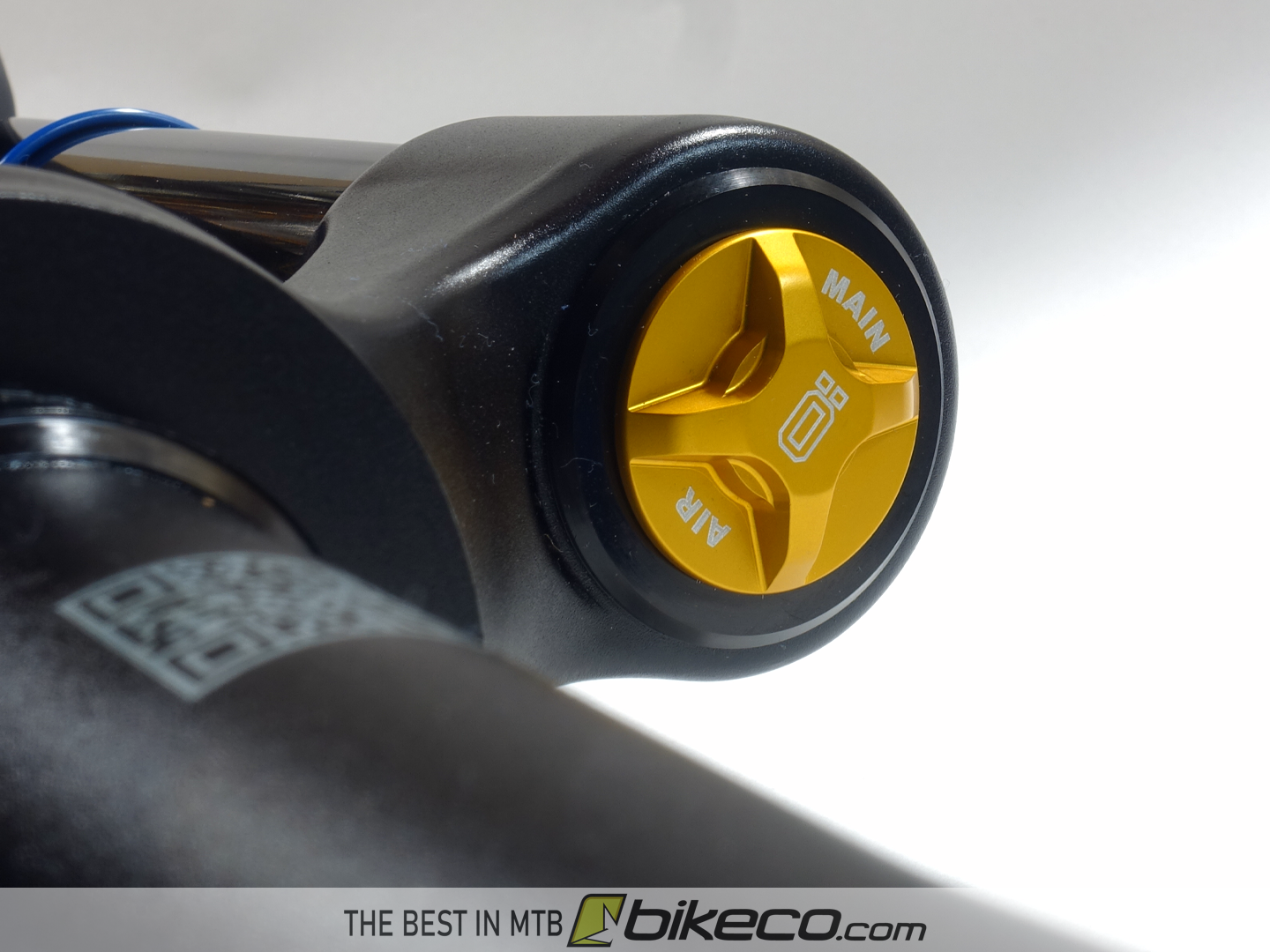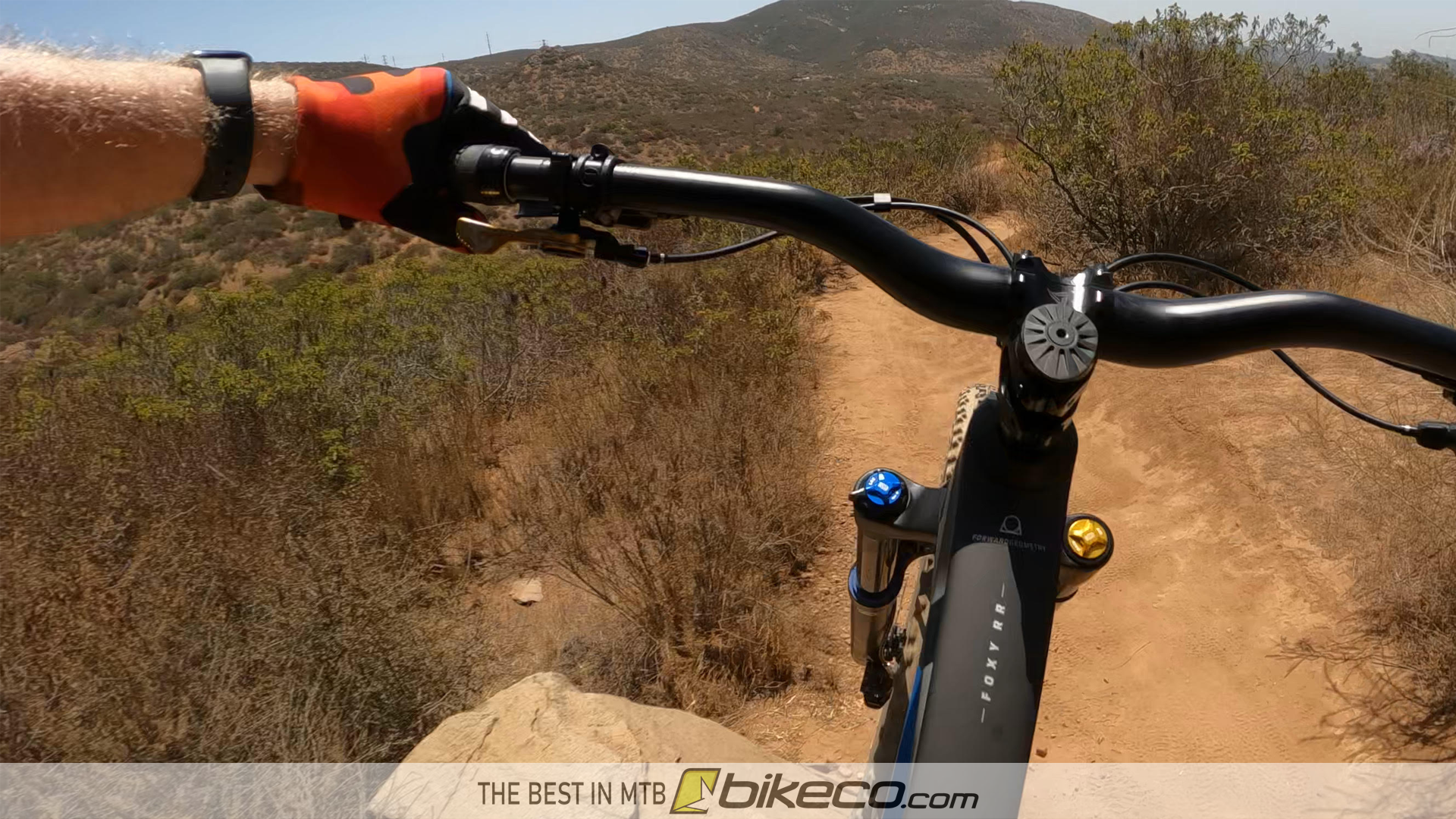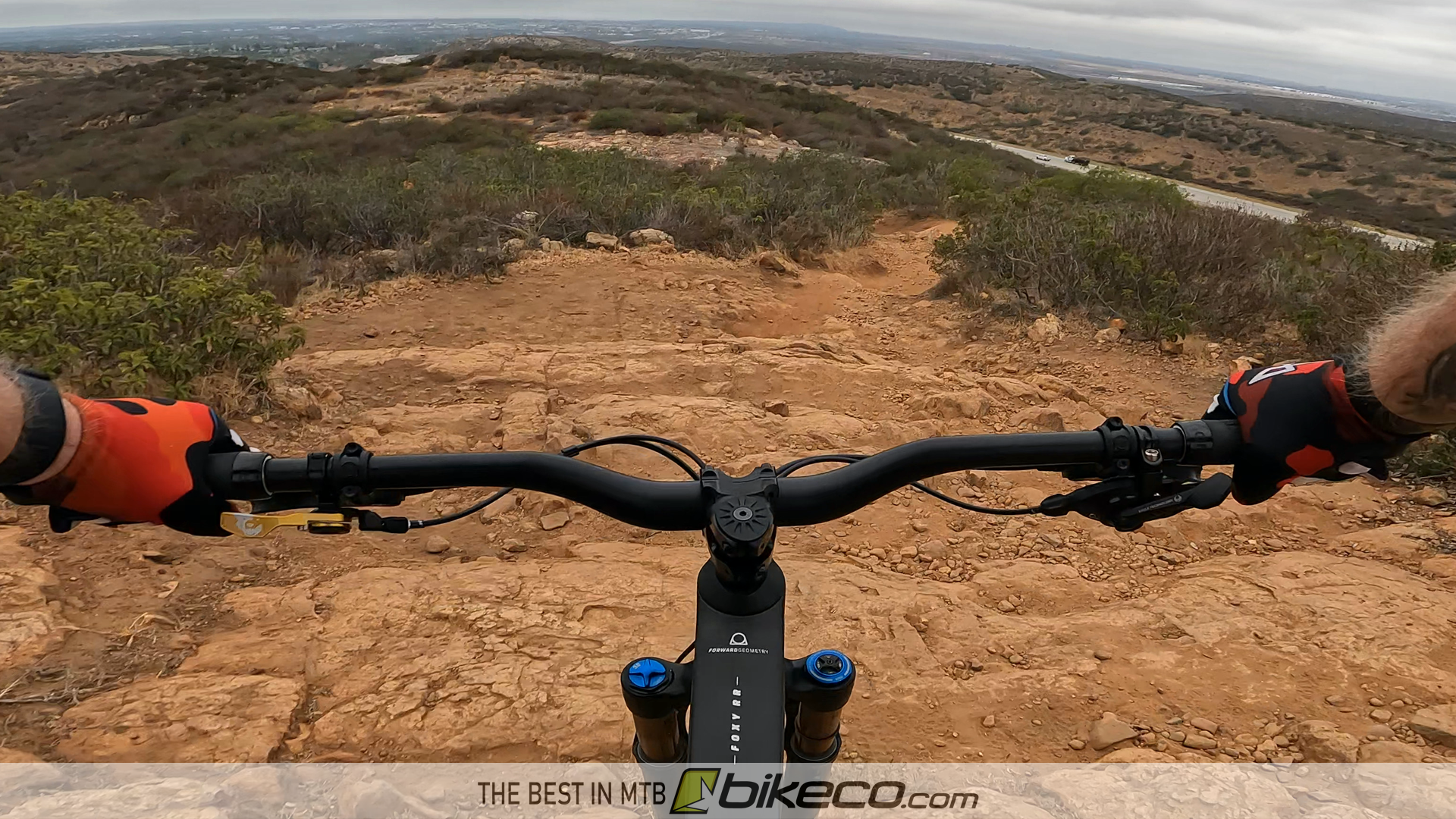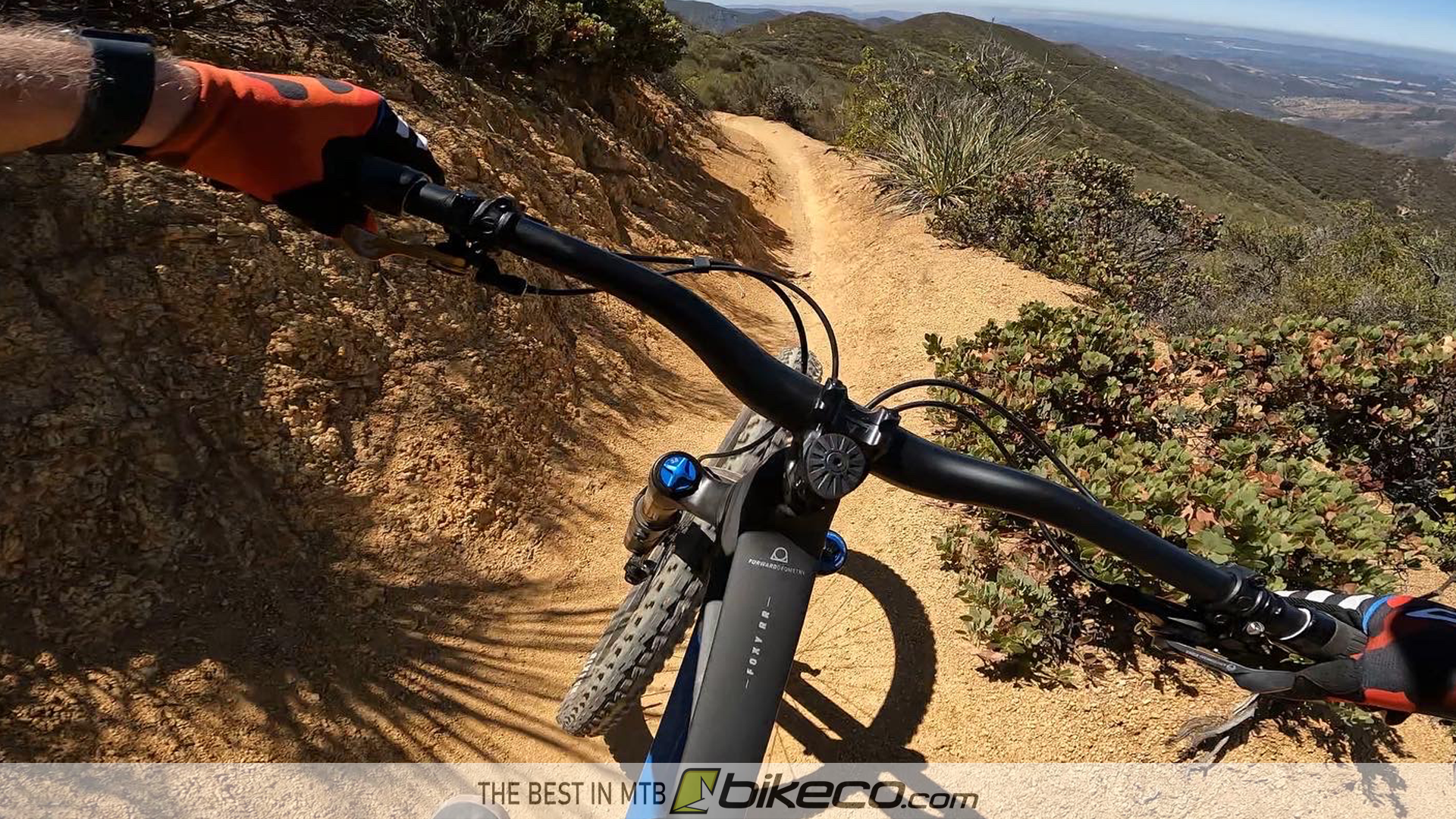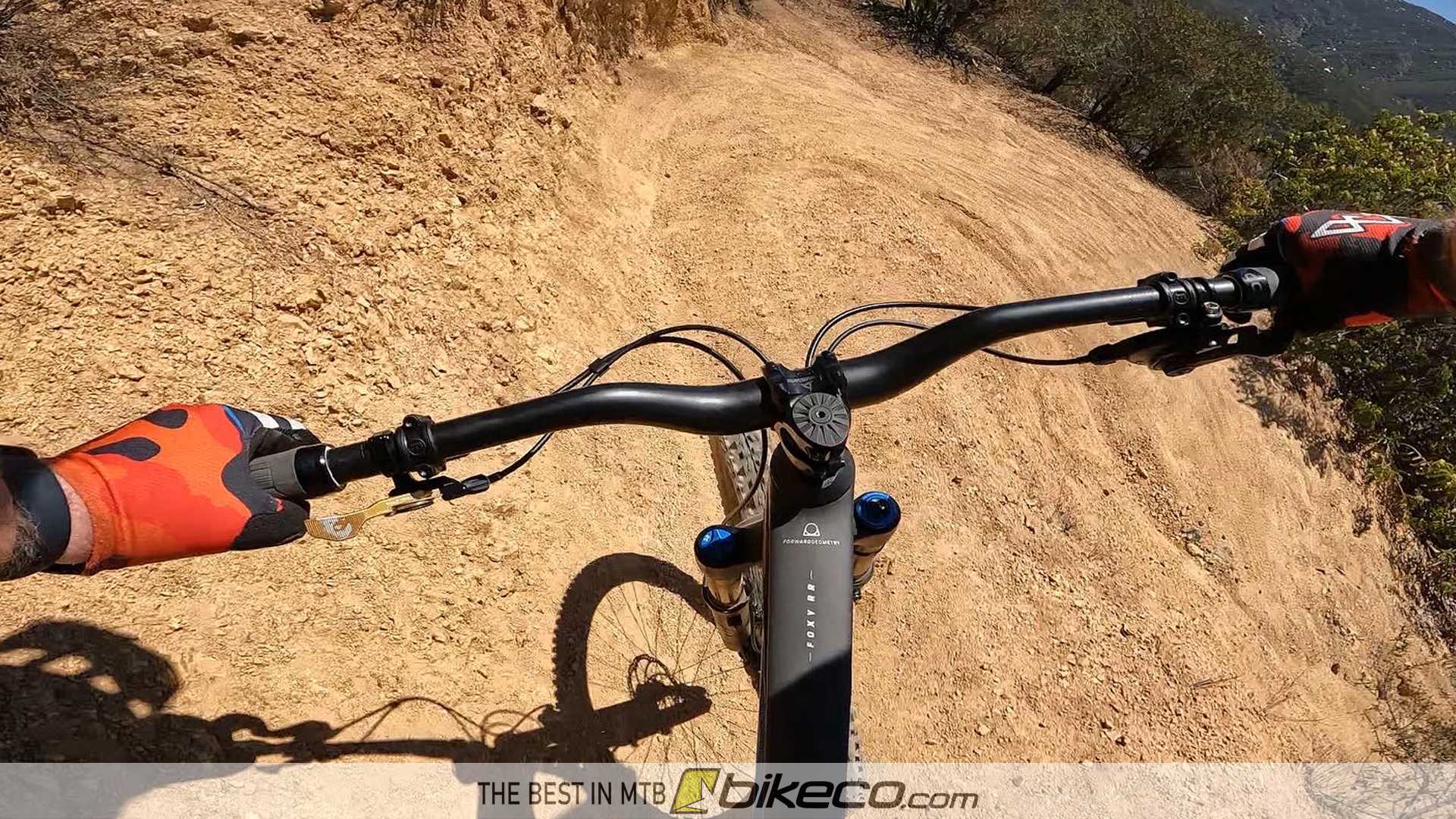A popular option for trail and down-country riding the FOX 34 GRIP2 provides ultimate adjust-ability with confident performance. Below you can learn more about the FOX 34 GRIP2 fork. Check out details on volume spacing, rebound as well as compression. Scroll down for videos on how these adjustments interact!
FOX 34 GRIP2 Fork Adjustments (Factory and Performance Elite)
Air Spring & Volume Spacers
Between air spring pressure as well as volume spacers the FOX 34 GRIP2 fork can be fine tuned for a wide range or riders.
Fox lists suggested sag at 15% for a firm feel and 20% for a plush fork.
Volume Spacers
The FOX 34’s ramp rate and support can be modified with volume spacers.
Each manufacturer may modify how many volume spacers are installed at the factory for their bikes. Below are the volume spacer maximums set by FOX for FOX 34 forks.
| Travel | Volume Spacers Factory Installed |
Max Volume Spacers |
|---|---|---|
| 140mm | 1 | 5 |
| 130mm | 2 | 6 |
| 120mm | 3 | 6 |
Do not install more volume spacers than the FOX advises. Installing more than the maximum volume spacers will result in product damage and potential for injuries, etc.
Learn more about the FOX 34 on FOX’s Tuning Guide Here (PDF opens in new tab)
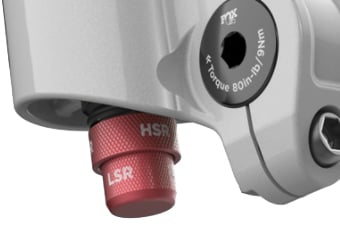
FOX 34 GRIP2 Rebound Controls
The GRIP2 damper provides both Low (LSR) and High (HSR) rebound controls.
The addition of the High Speed or HSR control provides increased rebound control to account for the higher PSI produced by aggressive or heavier riders.
Typically riders will adjust LSR, Low Speed Rebound, to suit riding style and taste and refer to FOX’s guide for the appropriate HSR, High Speed Rebound, pairing.
A Quick note on Rebound and Compression Settings: Counting Clicks BikeCo versus FOX
Your BIKECO suspension setup sheet counts clicks opposite to the FOX tuning guide.
BIKECO begins with the suspension full OPEN (counterclockwise) and counts clicks IN (clockwise). We do this because some suspension can have pintle valves damaged if there isn’t a mechanical stop in the closed position.

FOX GRIP2 Compression Controls
The FOX GRIP2 damper provides Low and High speed compression controls to fine tune support.
Compression circuits hydraulically damp (or slow) the fork’s input assisting the air spring in providing appropriate mid-stroke and bottom out feel.
Low Speed Compression helps provide mid-stroke support. This allows a bike to ride taller in the travel in cornering while resisting brake dive, rider weight shift and other slow shaft speed inputs.
High Speed Compression works to fine tune bottom out feel as well as other high shaft speed inputs also known as square edge bumps. Example: if you sprint straight into a curb you’re likely to engage the High Speed Compression even if you’re not using full travel. This is due to the speed of the shaft moving oil to compensate for the hit.
Suspension Setup Concepts
Learn about suspension setup basics on the following tabs. Each tab has a video with the basics of Air Spring / PSI, Volume Spacers, Compression, Rebound (or watch it all in one place with the final tab).
Each tab has a text section with a bit more in-depth look at the typical MTB suspension settings and how they intertwine.
PSI / Spring Rate
MTB suspension must accommodate a wide range of rider weight. To achieve this nearly all forks and rear shocks use an adjustable air spring.
By varying air pressure riders set a desired sag, or percentage of travel that the bike “sits into” under neutral loading.
Modifying this sag percentage will change small bump compliance as well as bottom out characteristics.
Learning how to Pre-Charge your suspension pump will help you make finite adjustments to sag.
Typically 15% sag is for a firm setup and 20% sag is considered plush.
Air Spring Fine Tuning Control(s): Volume Spacers & Compression
Volume Spacers
Air springs ramp rate, sometimes called Spring Rate, is based on how air compresses in the containment cylinder. As the air is compressed the PSI increases according to the decreasing volume of the containment. This is done via non-compressible volume spacers in the air chamber.
Compression.
Hydraulic damping assists air spring providing support in mid-stroke and bottom out.
Opposing Control: Rebound.
Higher spring rate will drive the suspension back to neutral with more force than a lower spring rate. To keep the bike from skipping across trail rebound damping is utilized.
Volume Tuning
As suspension compresses (travel reduces) a piston moves closer to the end of a sealed container. By decreasing the volume of the container the PSI pushing back on the piston is increased.
Adding or removing non-compressible volume spacers riders modify the air spring’s ramp rate which directly changes the amount of support and bottom out feel of the fork or shock.
By removing volume spacers a rider increases the available volume in the suspension. The larger volume compresses less per mm of travel resulting in a lower PSI per mm of travel. This creates less support and is utilizes more travel.
Adding volume spacers decreases the available volume. With less air volume the PSI per mm of travel increases providing more support and greater resistance to bottom out.
Opposing Control: Rebound.
Rebound may need to be adjusted for volume tuning depending on how drastic of a PSI change is being tuned in or out of the suspension.
“Helping” Control: Compression.
Adding compression provides additional support and bottom out resistance.
Compression
Your compression controls provide damping to slow suspension travel as a load is applied and the suspension is compressed. (easy one right?)
When riders have found sag and volume spacing preferences compression controls provide minute adjustments to dial in performance. Adding compression provides more support allowing the suspension to ride taller in its travel which is important when dialing in a bike’s personality in corners, etc.
With too little compression a bike will sit deep in the travel. This compromises cornering and braking force resistance. Headtube angle, bottom bracket height, front to rear weight bias, etc are modified as a bike goes through its travel. Maintaining control of the use of travel is paramount for good performance.
Since compression hydraulically slows the suspension’s use of travel it therefor lowers the air spring’s PSI. Properly setting compression controls will help ease the load on the rebound system by controlling the air spring’s push back onto the rebound circuit.
Too much compression will cause a bike to feel harsh and not use appropriate amounts of travel.
Generally, compression settings are fine tuned after sag and volume spacing have riders “in the ballpark.”
Low speed compression controls mid-stroke as well as support in cornering and against brake dive.
High speed compression helps with bottom out and high shaft speed inputs.
3 positions switches are a type of compression circuit with Open the most plush, Mid providing some additional support and Firm for climbing. If you climb in firm remember to put it back to plush for the downhill or you’re in for a potentially rough ride.
Rebound
Rebound damping controls a suspension’s shaft speed returning to a neutral position. Or, how fast the air spring pushes back as the load changes.
More rebound damping slows the suspension by decreasing the amount of fluid allowed to pass through the hydraulic design.
Less rebound damping allows the suspension to return faster with less hydraulic restriction on the damper.
Rebound setting is based on weight, ground speed, terrain and aggression. Setting the rebound properly means finding the right frequency or feel for your riding.
If your rebound is too fast, or doesn’t have enough clicks of rebound, the bike will tend to skip and suffer poor small bump compliance.
When the rebound is too slow, or you have too many clicks of rebound, the suspension may “pack up” creating a harsh ride as each bump uses progressively more travel forcing the suspension deeper into the travel, which will have higher spring rates.
Opposing: Air Spring PSI / Spring Rate.
“Helping” Control: Low & High Speed Rebound.
Some suspension is designed with 2 rebound circuits. The High Speed Rebound circuit is designed to provide additional control resisting increased PSI late in suspension travel.
Typically High Speed Rebound settings are used as the Low Speed Rebound controls edge towards closed. Example: you might not use any clicks of High Speed Rebound until you reach “X” clicks on the low speed.

